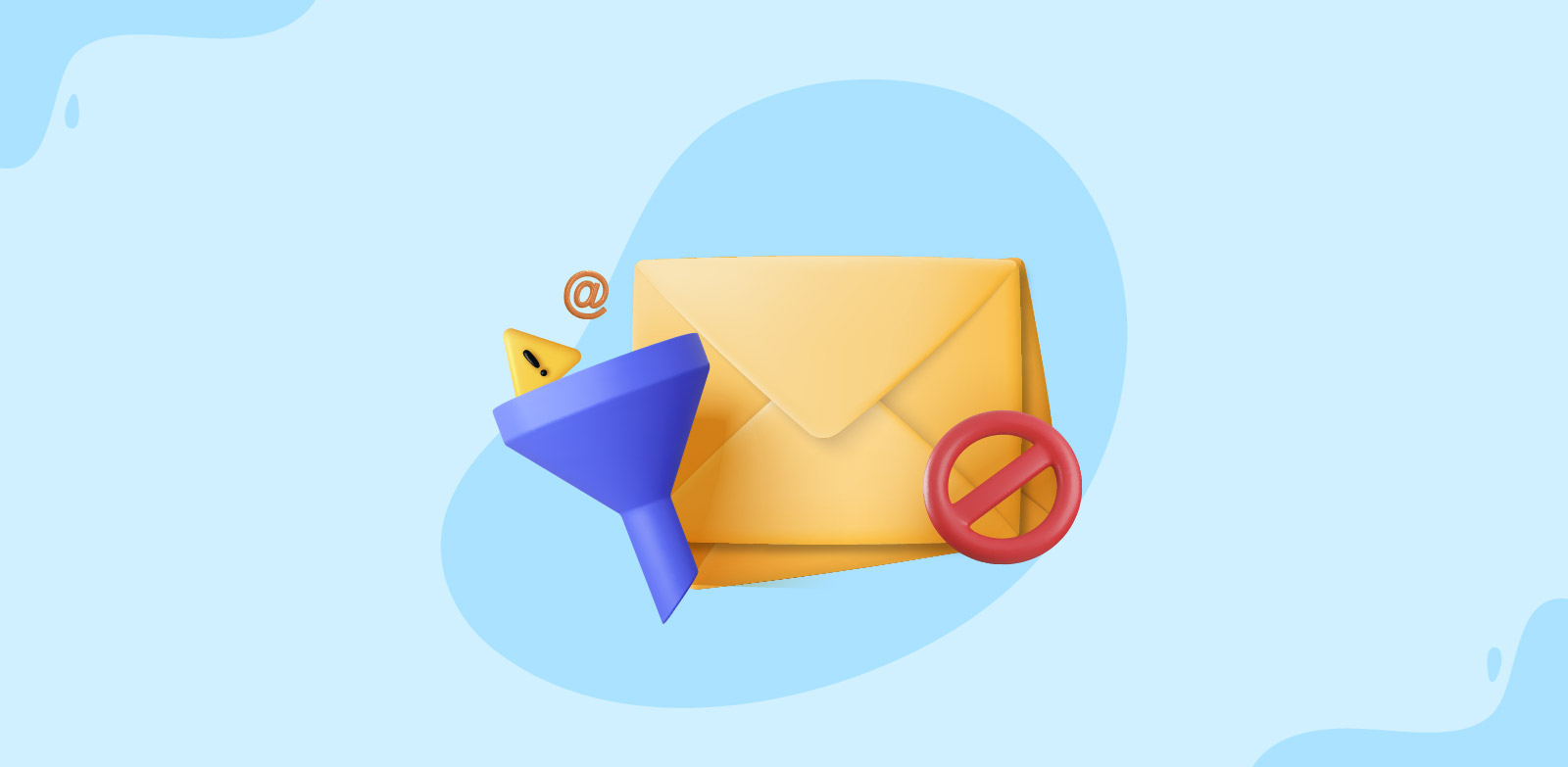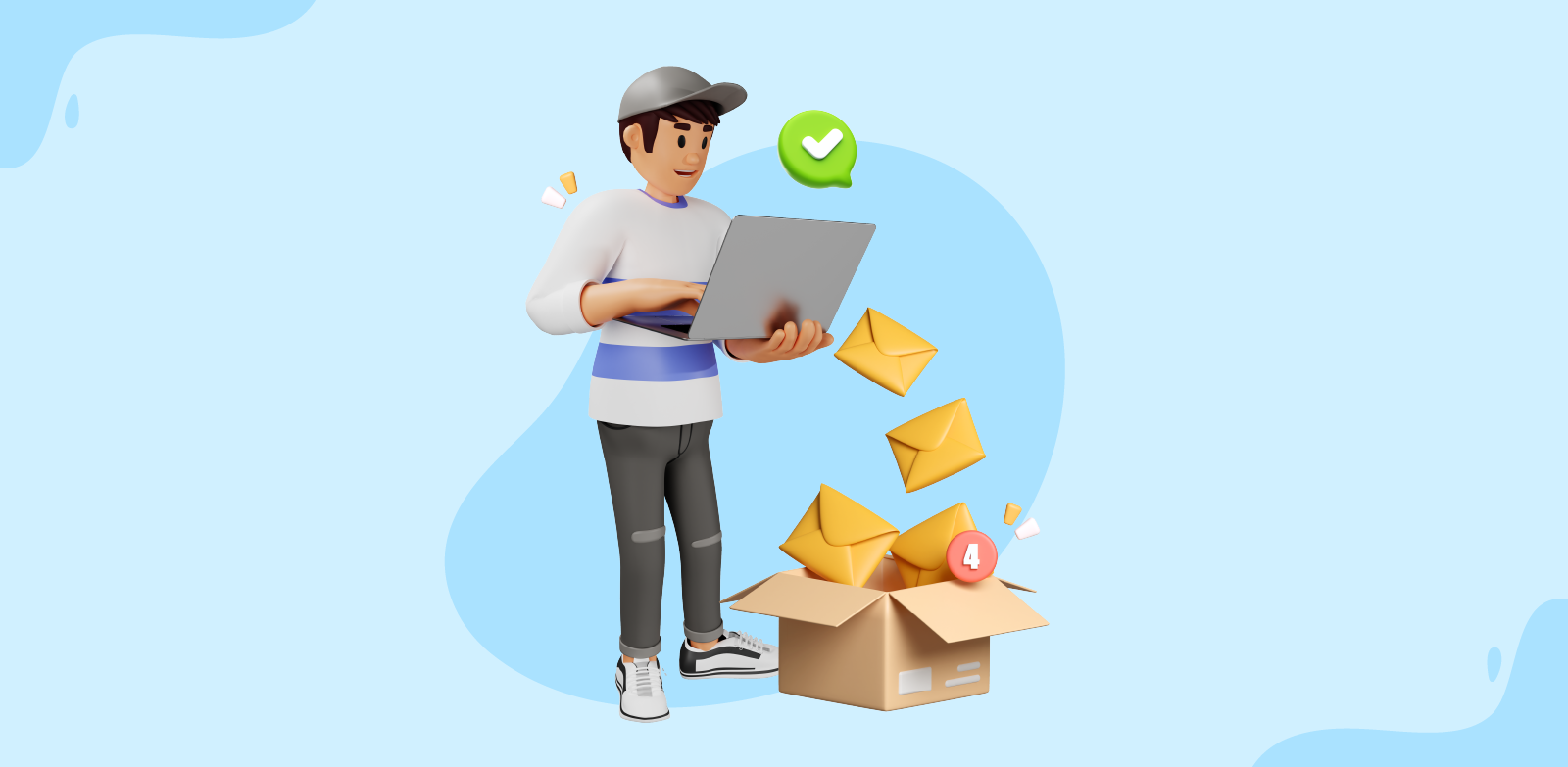How to manage email conversations effectively in a multichannel inbox
- Published : September 30, 2025
- Last Updated : October 31, 2025
- 112 Views
- 5 Min Read
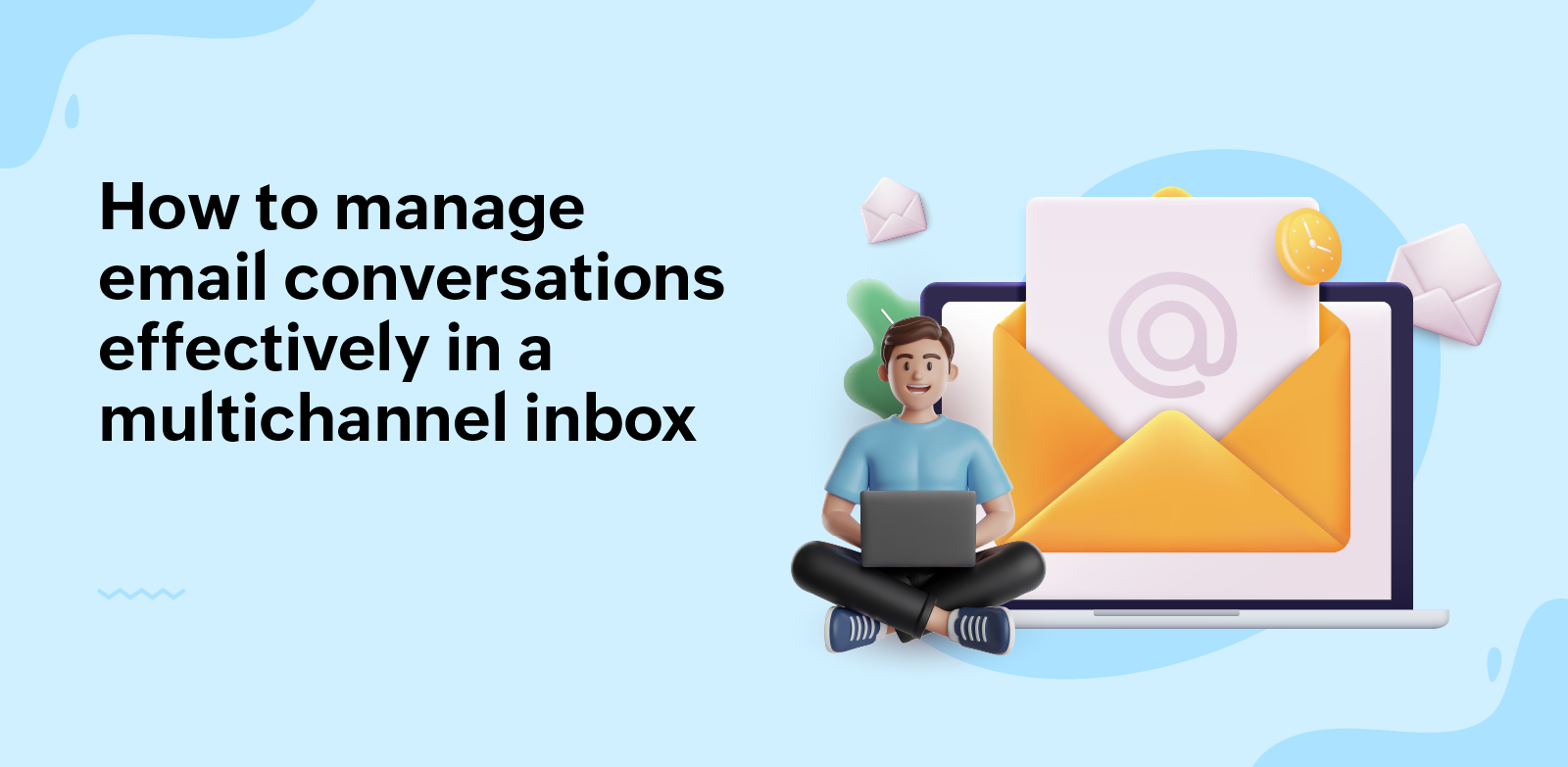
Even with chat apps, DMs, and social media everywhere, email still holds its place as the go-to channel for professional conversations. From inquiries to follow-ups, sharing important documents, confirming sales, or handling service requests, email remains the place where business conversations happen.
The numbers back this up. Statista shows that by 2026, people will send and receive nearly 392.5 billion emails a day. This means that your inboxes are only going to get busier. If you don’t manage them better now, you may struggle to keep up.
Common challenges in team email management
If you work with a team, you already know that managing group emails has never been easy. Sometimes group emails fall short because there's no proper collaboration and clarity of work. Everyone is left with a lot of guesswork within their inboxes, causing confusion, missed deadlines, and a general sense of frustration. That's just emails. Nowadays, your customers also use instant messaging apps and social media platforms to connect. Managing these conversations along with emails, getting all the scattered information, and then sending a response is exhausting.
Let's take a sales query or a support email as an example. When a new request comes in, the questions begin immediately: Who's going to reply? What if someone else is working on this issue? Should I confirm with my team members first? This confusion not only slows your team down, but chances are quite high that customers may feel ignored and unhappy.
Here are some of the most common issues teams face with improper email management:
- Team collaboration turns messy and confusing.
- Cluttered inboxes start feeling like unsolved puzzles.
- No one is sure who’s handling what.
- Important emails get delayed replies or, worse, no replies at all.
- Duplicated work happens often.
- Replies are fragmented or lack context.
- Context is scattered, making threads hard to follow.
- Teams feel pressure when facing frustrated customers.
But what if there was a better way to manage group emails, along with other conversations? With the right tools and strategies, your teams can simplify their work, bring in more transparency, and improve productivity.
Why do your teams need multichannel inboxes?
A multichannel inbox is the perfect solution here. It connects your multiple communication channels together and pulls all conversations, emails, chats, DMs, and more into one unified inbox. Instead of bouncing between apps and tabs, your team can finally see every interaction in one place.
Imagine a customer first reaches out to you on Instagram, shares details over WhatsApp, and finally asks for a formal update by email. Once the email conversation starts, they again ping you on WhatsApp, asking for some quick updates. That’s a lot of back-and-forth, right?
Now picture all of those conversations arriving neatly into your multichannel shared inbox, along side emails. No more switching apps or losing track of conversations. Your teams can easily view messages, discuss them, and understand the context better without having to jump through multiple apps or tabs.
It's a breather for your customer-facing teams, such as sales and support, because it keeps them on top of every customer conversation and helps them send quick and more informed replies.
Best practices for email management in multichannel inboxes
Managing group emails needs a system to categorize, prioritize, and organize them for your teams. Multichannel inboxes allow you to do this for both your group and personal emails alongside other conversations. Here are the best practices you can follow when using multichannel inboxes:
- Create different inboxes for your teams so no one has to guess where things belong.
- Give role-based access to team members so they only perform actions that are needed, making collaboration safe and structured.
- Add tags to emails such as “Urgent,” “Billing,” or “Follow-up.” It’s like naming your files so everyone can find them faster when they need them.
- Instead of forwarding or cluttering inboxes, use "Comments" to discuss threads. Your team can chat right there without leaving their inboxes.
- Once you're done with an email, archive it. This keeps your inbox clean and helps you focus only on what still needs attention.
- Hit snooze on emails that can wait. They’ll come back to you later—so you stay focused on what matters now.
- If an email lands in the wrong place, just move it to the correct inbox. This ensures that the right team handles it without delay.
- When the same email shows up multiple times, mark them as duplicates. It saves your team from answering the same thing twice.
- Stop spam emails before they reach your inboxes. You can use anti-spam settings to block email addresses or domains and keep your inboxes tidy.
- Create response templates for emails and save yourself from writing the same content repeatedly and ensure quicker replies. This will also help you maintain consistency in the emails that go out from your team.
- Set up automation rules for routine tasks such as sending common replies, tagging, or assigning emails to team members. This reduces manual work and frees your team to focus on other important tasks.
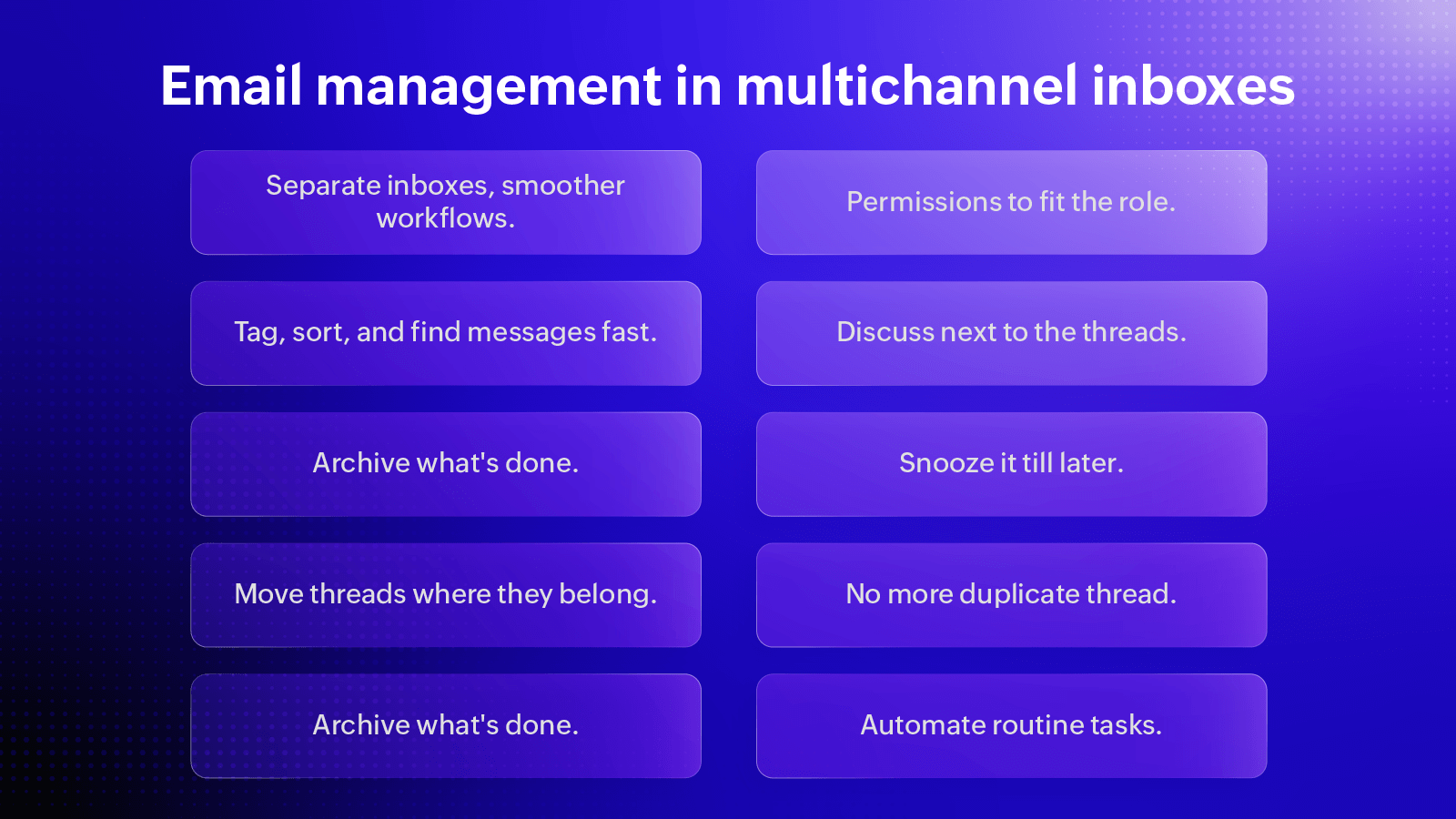
The benefits of managing emails in multichannel inboxes
- All-in-one inboxes: Bring all of your customer conversations from social and chat right next to emails into one shared inbox. No more switching tabs or missing messages.
- More productive teams: Your teams save time by working together in one place with more clarity, better access to information, and fewer back-and-forths.
- Faster response times: When everything is organized and easily accessible, your team can reply faster, keeping customers happy.
- A more transparent workspace: Everyone sees who’s handling what, which reduces the chances of confusion and ensures that every message gets the right attention.
- Consistent customer experience: Customers get similar responses across channels, without any delays or duplication.
- Smarter insights: Features such as Analytics give you a complete performance overview of your teams, inboxes, and team members by tracking key metrics such as response times, resolution rates, and overall communication patterns.
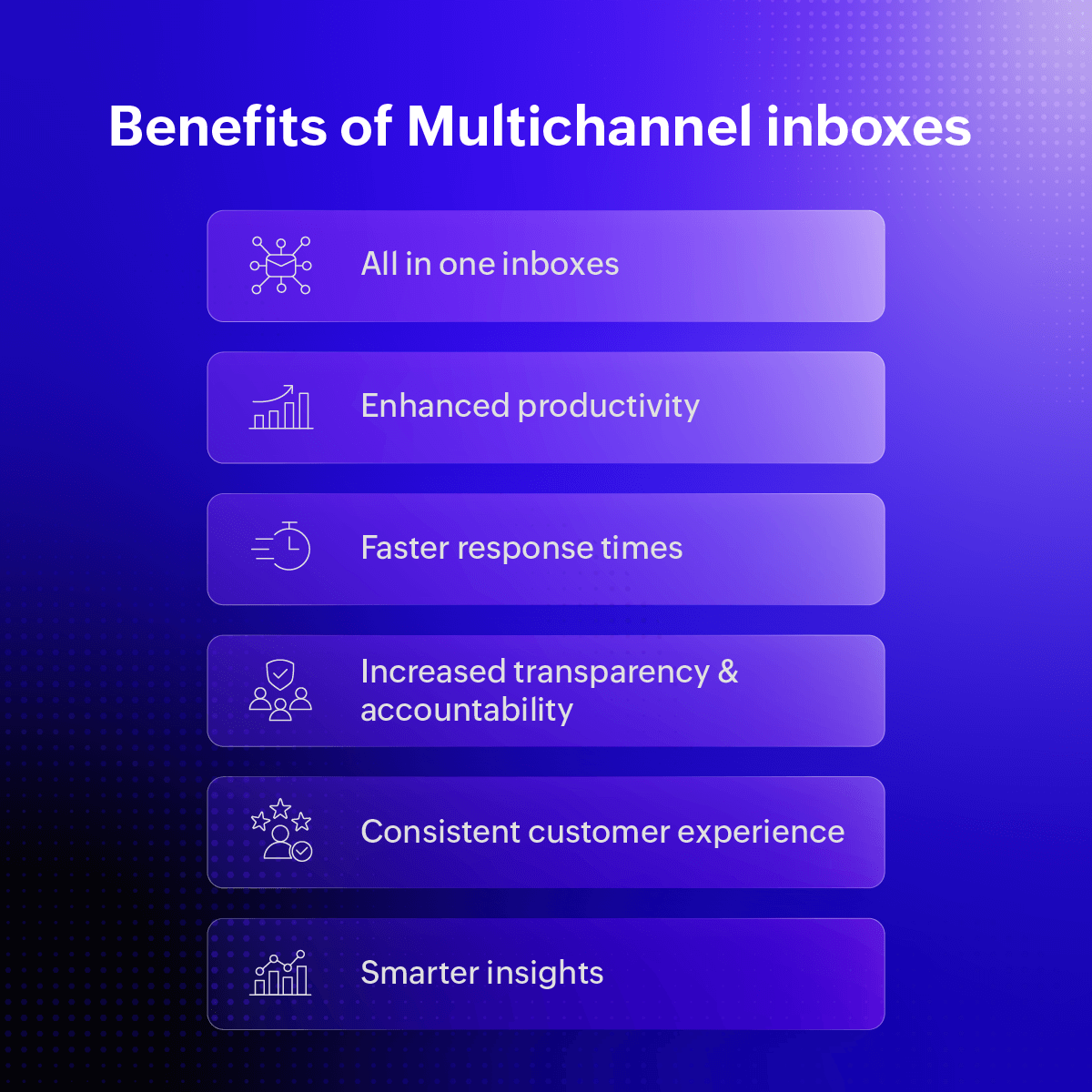
Manage your personal and group emails with Zoho TeamInbox
Zoho TeamInbox is a multichannel shared inbox platform that's designed to enhance transparency in both internal and external team communication. You can link your emails, WhatsApp Business, Telegram numbers, Facebook Messenger, and professional Instagram channels to the shared inboxes you create here and manage all of your conversations in one unified place.
Once you sign up with Zoho TeamInbox, name your organization and add members to it. This creates a workspace where you'll create teams and add team members. Under each team, you can create shared inboxes and connect communication channels to start receiving messages in Zoho TeamInbox. You can connect a specific email address as an incoming email channel (medium to bring in emails) and as an outgoing email channel (sender address) either in a shared space or in the personal space. It allows you to create multiple outgoing email channels and assign them to specific inboxes.
Wrapping up
Ready to finally escape the chaos of messy inboxes? With Zoho TeamInbox, you and your team can manage both personal and shared emails and stay focused on what really matters. Try Zoho TeamInbox today and see how it can streamline your email management and enhance team communication. For any questions or feedback to share, feel free to email us at support@zohoteaminbox.com.
